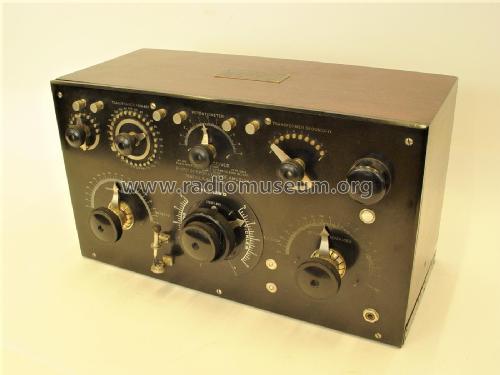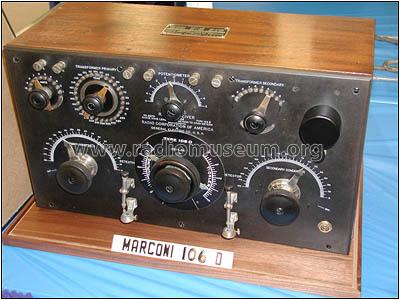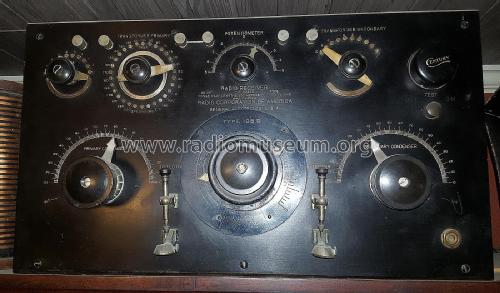Radio Receiver 106D
General Electric Co. (GE); Bridgeport CT, Syracuse NY
- Produttore / Marca
- General Electric Co. (GE); Bridgeport CT, Syracuse NY
- Anno
- 1919–1922
- Categoria
- Radio a galena (a cristallo o a diodo, senza valvole o transistores)
- Radiomuseum.org ID
- 199179
-
- Brand: Musaphonic
- Principio generale
- Rivelazione a galena / semi-conducteur
- Gamme d'onda
- Onde medie (OM) e onde lunghe (OL).
- Tensioni di funzionamento
- Alimentazione non richiesta
- Altoparlante
- - Per cuffie o amplificatori esterni
- Materiali
- Mobile in legno
- Radiomuseum.org
- Modello: Radio Receiver 106D - General Electric Co. GE;
- Forma
- Soprammobile a cassapanca o cassetta, solitamente con coperchio (NON a leggio)
- Dimensioni (LxAxP)
- 21 x 12 x 9.5 inch / 533 x 305 x 241 mm
- Annotazioni
-
In 1919 the Marconi Wireless Telegraph Co. was absorbed into the RCA conglomerate and prduction of the 106B was transfered to the GE plant in Schenectady, New York. Sets built after the merger no longer had Marconi Wireless engraved on the front panels. Instead all subsequent sets had Radio Corporation of America by General Electric Co. U.S.A. engraved on the front panel.
Towards the end of 1922 GE introduced a conversion kit to convert earlier 106 models into a regenerative 106D model using an external tube detector. The new added tickler coil, along with the output, was brought out to a new terminal strip on the RH side of the cabinet. The track and gear loose coupled secondary was completely replaced by an entirely new assembly with the coupling coil hinged over the vertically mounted secondary coil. It still covered the same 200-3500 meters wavelength range that the earlier non-regenerative 106 models did.
Another new change to the 106 was the addition of a phone jack in the lower RH corner for operator headphones. The phone jack was installed in the buzzer button hole on the 106 and a new whole was drilled in the panel of 106B and 106C receivers. This phone jack matched the phone jack on the front panels of the GE AD-1527, AA-1528 and AA-1400 units with which the 106D was also used. The new phone jack allowed the operator to switch between the crystal detector and the external vacuum tube detector without using binding posts.
Three new pairs of binding posts were also added to the top of the front panel. These new pairs were connected to the primary, secondary and tickler circuits and were used in conjuntion with external loading coils. This allowed the 106D to communicate with transoceanic stations such as RCA;s WQL which operated at a wavelength of 16,465 meters.
The 106D conversions were available at the factory but most were performed in the field using the factory supplied conversion kit.
- Peso netto
- 12.8 kg / 28 lb 3.1 oz (28.194 lb)
- Letteratura / Schemi (1)
- Radiola, the golden Age of RCA (page 54-55)
- Autore
- Modello inviato da Alan Larsen. Utilizzare "Proponi modifica" per inviare ulteriori dati.
- Altri modelli
-
In questo link sono elencati 2962 modelli, di cui 2174 con immagini e 2074 con schemi.
Elenco delle radio e altri apparecchi della General Electric Co. (GE); Bridgeport CT, Syracuse NY
Collezioni
Il modello Radio Receiver fa parte delle collezioni dei seguenti membri.
Musei
Il modello Radio Receiver può essere visto nei seguenti musei.






